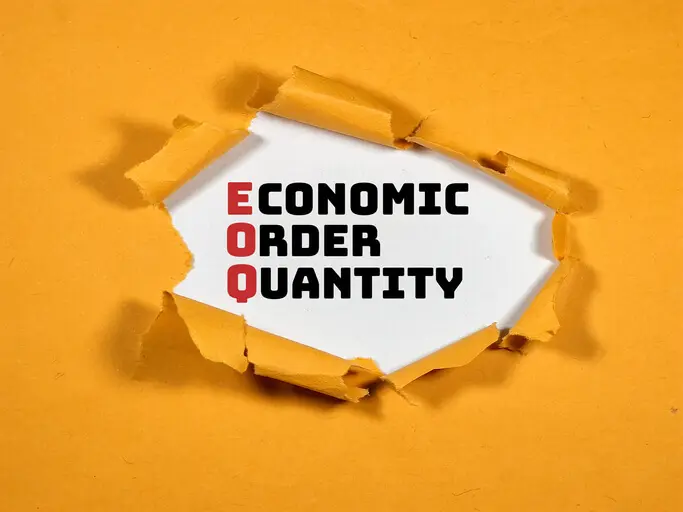Obsolete inventory is a pervasive issue that plagues businesses across various industries. It not only ties up valuable capital but also imposes significant carrying costs, hampers operational efficiency, and ultimately erodes profitability. In the fast-paced and ever-evolving landscape of modern business, effectively managing obsolete inventory is crucial for maintaining a competitive edge and ensuring long-term sustainability. This comprehensive guide delves into the intricate aspects of obsolete inventory, providing a thorough understanding of its implications, root causes, and viable solutions.
Definition and Meaning of Obsolete Inventory
Obsolete inventory, also known as deadstock, refers to stock or materials that have become redundant, outdated, or no longer have a viable demand in the market. These items may have lost their value due to various factors, such as technological advancements, changing customer preferences, or the introduction of newer, more desirable products. Examples of obsolete inventory can range from unsold electronics or fashion items to spare parts for discontinued machinery or components that have been superseded by newer versions. Effectively managing obsolete inventory is of paramount importance for businesses as it directly impacts their bottom line and overall operational efficiency. Carrying excess obsolete stock not only incurs unnecessary holding costs but also ties up valuable resources that could be better allocated elsewhere. Moreover, the presence of obsolete inventory can lead to cluttered warehouses, hindering efficient inventory management and potentially causing confusion or delays in fulfilling orders.
Understanding Obsolete Inventory
Obsolete inventory differs from other types of inventory in several key aspects. Unlike regular inventory, which is actively sold and replenished, obsolete inventory often accumulates due to poor planning, inaccurate forecasting, or unforeseen market shifts. These items may remain in storage for extended periods, gradually losing their value and becoming increasingly difficult to sell or repurpose. Several factors can contribute to the obsolescence of inventory. One of these is technological advancements. Rapid technological changes can render certain products or components obsolete, particularly in industries such as electronics, telecommunications, and computer hardware. Then one also has to contend with changing consumer preferences. Fluctuations in consumer tastes, trends, and preferences can lead to a decline in demand for specific products, rendering existing inventory obsolete. Seasonal or cyclical products may become obsolete once the corresponding season or cycle has passed. Yet another factor is changes that may occur in regulations or industry standards which can make certain products or materials non-compliant, necessitating their removal from inventory. A final factor is poor inventory management. Ineffective inventory management practices, such as inaccurate forecasting, inadequate monitoring, or lack of coordination between different departments, can contribute to the accumulation of obsolete inventory.
Why is Obsolete Inventory Important?
Managing obsolete inventory is critical for the financial and operational health of a company. It can have a large financial impact on companies as obsolete inventory represents capital that is tied up and not generating any revenue. It incurs carrying costs, such as storage, insurance, and potential write-offs, which can significantly impact a company’s profitability and cash flow. Excess obsolete inventory can also lead to cluttered warehouses, making it difficult to locate and retrieve items efficiently. This can result in longer lead times, decreased productivity, and potential customer dissatisfaction. Holding onto obsolete inventory increases the risk of further devaluation, making it even more challenging to recoup any remaining value from these items. The capital and resources allocated to carrying obsolete inventory could be better utilized for more productive purposes, such as investing in new product development, expanding operations, or pursuing growth opportunities. By effectively managing obsolete inventory, companies can free up valuable resources, streamline their operations, and improve their overall financial performance.
Inventory Analysis
Conducting periodic inventory analysis is crucial for identifying and addressing obsolete inventory. A number of steps need to be followed in this process. Physical inventory counts should be performed regularly to reconcile the actual stock levels with the recorded quantities in the inventory management system. Analyzing the age of each inventory item will enable companies to identify slow-moving or stagnant stock that may be at risk of becoming obsolete. Demand forecasting plays an important role. This is the process of reviewing historical sales data, market trends, and customer feedback to forecast future demand and identify potential obsolescence risks. Implementing a cycle counting process, where a specific subset of inventory is counted on a regular basis, can help identify discrepancies and potential obsolescence issues. Yet another tool is ABC analysis. This involves categorizing inventory items based on their value and importance, with “A” items being the most valuable and “C” items being the least valuable. The process can help prioritize inventory management efforts. Of course maintaining open communication with suppliers regarding product lifecycles, potential discontinuations, or upcoming changes can go a long way in providing valuable insights into potential obsolescence risks. Regular inventory analysis allows companies to proactively identify and address obsolete inventory, minimizing the associated financial and operational impacts.
Consequences of Obsolete Inventory
Failing to effectively manage obsolete inventory can have severe consequences for a business, both financially and operationally. Let us assess the ways in which this can occur, and possible methods of prevention:
Financial Impact
Businesses are subjected to increased carrying costs as obsolete inventory incurs ongoing costs for storage, handling, insurance, and potential write-offs, which can significantly impact a company’s profitability. At the same time, cash flow is decreased. Capital tied up in obsolete inventory reduces the availability of funds for other operational or investment needs, hampering cash flow and financial flexibility. If obsolete inventory cannot be sold or repurposed, it may need to be written off entirely, resulting in a direct loss for the company through inventory shrinkage. Resources allocated to carrying obsolete inventory could have been better utilized for more productive purposes, such as investing in new product development or pursuing growth opportunities.
Effects on Supply Chain and Operations
There are a number of effects on the supply chain and operations. An obvious effect would be warehouse congestion. Excess obsolete inventory can lead to cluttered warehouses, making it difficult to locate and retrieve items efficiently, resulting in longer lead times and potential customer dissatisfaction. Obsolete inventory often also requires additional handling, such as relocation or special storage arrangements, which can increase operational costs. At the same time, the presence of obsolete inventory can hinder the efficient flow of materials and products, leading to delays, disruptions, and decreased productivity. Resources tied up in obsolete inventory can limit a company’s ability to respond quickly to changes in market demand, potentially causing them to miss out on lucrative opportunities. By effectively managing and minimizing obsolete inventory, companies can improve their financial performance, streamline their operations, and enhance their overall competitiveness.
Benefits of Eliminating Obsolete Inventory
Implementing effective strategies to manage and eliminate obsolete inventory can yield numerous benefits for a business. Cash flow is improved as the amount of capital tied up in obsolete inventory is reduced. Companies can thus free up funds for more productive purposes, such as investing in new product development, expanding operations, or pursuing growth opportunities. Eliminating obsolete inventory also frees up valuable warehouse space, allowing for more efficient storage and retrieval of active inventory items. With less clutter in the warehouse and streamlined inventory management processes, companies can improve their overall operational efficiency, leading to shorter lead times, increased productivity, and better customer service. By minimizing the amount of obsolete inventory, companies can significantly reduce the associated carrying costs, such as storage, handling, insurance, and potential write-offs. The accuracy of inventory records can be enhanced by reducing the amount of obsolete inventory as it becomes easier to track and manage active inventory items. Ultimately, by having a clear understanding of their inventory levels and obsolescence risks, companies can make more informed decisions regarding production planning, purchasing, and inventory management strategies. Overall, effectively managing and eliminating obsolete inventory can have a profound impact on a company’s financial performance, operational efficiency, and competitiveness in the market.
Common Causes of Inventory Obsolescence
Understanding the root causes of inventory obsolescence is crucial for implementing effective prevention and mitigation strategies. Let us take a look:
Inaccurate Inventory Forecasting
Inaccurate inventory forecasting is one of the primary contributors to the accumulation of obsolete inventory. If demand is overestimated, companies may end up with excess stock that becomes obsolete over time. Conversely, underestimating demand can lead to stockouts, prompting companies to overcompensate by ordering too much inventory, which may eventually become obsolete.
Inadequate Inventory Management System
Ineffective inventory management systems can also contribute to the accumulation of obsolete inventory. Outdated or poorly designed systems may fail to provide accurate real-time data on inventory levels, sales trends, and product lifecycles, making it difficult to identify and address potential obsolescence risks in a timely manner.
Poor Product Quality or Design
In some cases, obsolete inventory may result from poor product quality or design flaws. If a product fails to meet customer expectations or has inherent design issues, demand may drop rapidly, leaving companies with excess inventory that becomes increasingly difficult to sell or repurpose.
Careless Purchasing
Purchasing practices that lack strategic planning and coordination can contribute to the buildup of obsolete inventory. For example, failing to consider lead times, minimum order quantities, or upcoming product changes can result in excess inventory that may become obsolete before it can be sold or used.
Inaccurate Delivery Times
Inaccurate delivery times or delays in the supply chain can also lead to the accumulation of obsolete inventory. If inventory arrives significantly later than anticipated, it may become obsolete or no longer meet customer demand by the time it reaches the warehouse or retail stores. By identifying and addressing these common causes, companies can implement proactive measures to minimize the risk of inventory obsolescence and maintain a more efficient and cost-effective inventory management system.
How to Identify Obsolete Inventory
Identifying obsolete inventory in a timely manner is crucial for mitigating its potential impact on a business. Here are some techniques and tools that can help recognize inventory that risks becoming obsolete. Firstly, regularly reviewing the age of inventory items will help to identify slow-moving or stagnant stock that may be at risk of becoming obsolete. Analyzing historical sales data, market trends, and customer feedback enables companies to forecast future demand and identify potential obsolescence risks. Companies should also stay informed about product lifecycles, upcoming model changes, or discontinuations from suppliers, as these can signal potential obsolescence risks. They should calculate and monitor the inventory turnover ratio. This measures how quickly inventory is sold or used. A low turnover ratio may indicate the presence of obsolete or slow-moving items. Implementing a cycle counting process, where a specific subset of inventory is counted on a regular basis, can allow companies to identify discrepancies and potential obsolescence issues. Utilizing inventory management software enables proactive decision-making as it provides real-time visibility into inventory levels, sales trends, and potential obsolescence. Regular physical inspections of inventory should also be conducted in order to identify items that may be damaged, outdated, or no longer in demand. By proactively identifying obsolete inventory, companies can take timely action to minimize the associated financial and operational impacts.
Management Strategies for Obsolete Inventory
Effective management of obsolete inventory requires a combination of proactive and reactive strategies. If you worry that obsolete inventory will plague your business, fret not, as we have compiled a list of top tips and strategies to to combat this!
Preventing Inventory Obsolescence
A number of proactive strategies can help minimize the risk of inventory obsolescence. They include accurate demand forecasting, continuous improvement in inventory management, supplier collaboration and maintaining open communication with suppliers, product lifecycle management, and inventory optimization.
Reducing Existing Inventory
For inventory that has already been classified as obsolete, there are useful strategies that may be employed. Remarketing involves exploring alternative markets or channels where obsolete inventory may still have value, such as discount retailers, liquidation channels, or export markets. Obsolete inventory could also be bundled with other products or offered on promotional discounts to incentivize sales and reduce excess stock. Businesses could also consider repurposing or remanufacturing obsolete inventory into new products or components, if feasible, to recover some of the value. If selling or repurposing is not viable, businesses should consider donating obsolete inventory to charitable organizations or recycling it in an environmentally responsible manner. As a last resort, obsolete inventory that cannot be sold, repurposed, or donated may need to be written off or scrapped, minimizing the ongoing carrying costs and freeing up valuable resources. By implementing a combination of preventive and reactive strategies, companies can effectively manage obsolete inventory, minimize its financial and operational impacts, and maintain a lean and efficient supply chain. Read more on reducing inventory levels.
6 Ways to Dispose of Obsolete Inventory
When faced with obsolete inventory that cannot be sold or repurposed, companies have several options for disposing of these items in a responsible and cost-effective manner.
Remarketing of Items
Remarketing involves finding alternative markets or channels where obsolete inventory may still have value. This could include selling to discount retailers, liquidation channels, or exploring export markets where the products may still be in demand.
Discount Sale
Offering deep discounts on obsolete inventory can help accelerate its sale and clear out excess stock. Companies can leverage various promotional strategies, such as clearance sales, bundle deals, or special offers, to incentivize customers to purchase these items.
Product Bundles
Creating product bundles that include obsolete items along with more desirable products can be an effective way to increase the perceived value of the obsolete inventory and facilitate its sale. This strategy can be particularly useful for items that may not be attractive as standalone products but could serve as valuable add-ons or accessories.
Liquidation of Items
Liquidation involves selling obsolete inventory in bulk to liquidators or through special liquidation sales. These channels typically offer a quick and efficient way to dispose of excess stock, although the return on investment may be lower than other disposal methods.
Donation of Obsolete Inventory
Donating obsolete inventory to charitable organizations or non-profit entities can be a socially responsible option while also providing potential tax benefits for the company. This approach not only helps clear out excess stock but also contributes to the community and enhances the company’s corporate image.
Scrapping of Obsolete Inventory
In cases where obsolete inventory cannot be sold, repurposed, or donated, scrapping may be the only viable option. This involves physically disposing of the items in an environmentally responsible manner, such as through recycling or proper disposal channels. While scrapping may result in a complete loss of the inventory’s value, it can help free up valuable warehouse space and eliminate ongoing carrying costs.
The choice of disposal method will depend on various factors, including the condition of the obsolete inventory, the potential for recovering value, and the company’s specific goals and priorities. By carefully evaluating these options, businesses can effectively manage and dispose of obsolete inventory while minimizing financial losses and environmental impact.
4 Ways to Prevent Obsolete Inventory
While managing existing obsolete inventory is crucial, implementing proactive strategies to prevent the accumulation of obsolete stock is equally important for long-term operational efficiency and profitability.
Accurate Demand Forecasting
Accurate demand forecasting is essential for maintaining optimal inventory levels and minimizing the risk of obsolescence. By leveraging historical data, market trends, and sales input, businesses can develop robust forecasting models that anticipate future demand and inform inventory planning decisions.
learn more about how Intuendi can help with accurate forecasting:
Ensuring Inventory is Visible and Available on All Channels
In today’s omnichannel retail environment, ensuring inventory visibility and availability across all sales channels is paramount. Implementing an integrated inventory management system that provides real-time updates and synchronizes stock levels across physical stores, e-commerce platforms, and other sales channels can help prevent the accumulation of obsolete inventory due to channel-specific imbalances or inefficiencies.
Knowing the Reorder Point
Determining the optimal reorder point is crucial for maintaining appropriate inventory levels and avoiding both excess and shortage situations. By considering factors such as lead times, demand patterns, and safety stock requirements, businesses can calculate the ideal point at which to replenish inventory, reducing the risk of obsolescence due to overstocking or stockouts.
Monitoring Inventory Levels in Real Time
Continuously monitoring inventory levels in real-time is essential for identifying potential obsolescence risks early and taking corrective action. Advanced inventory management software and real-time data analytics can provide valuable insights into inventory movements, sales trends, and potential slow-moving or excess stock, enabling proactive adjustments to order and stocking strategies.
Using Inventory Management Software
Investing in advanced inventory management software can significantly enhance a company’s ability to prevent obsolete inventory. These solutions often incorporate features such as demand forecasting, automatic reordering, real-time inventory tracking, and predictive analytics, enabling businesses to optimize stock levels, identify potential obsolescence risks, and make data-driven decisions regarding inventory management. By implementing these proactive strategies, businesses can effectively minimize the risk of accumulating obsolete inventory, ensuring that their stock levels align with actual demand and market conditions. Embracing a proactive mindset, coupled with the right tools and technologies, empowers companies to stay ahead of potential obsolescence issues, optimize their inventory management processes, and maintain a lean and agile supply chain capable of adapting to changing market dynamics.
Moreover, continuously monitoring and reviewing inventory management practices is crucial. Companies should regularly assess the effectiveness of their strategies, analyze performance metrics, and seek opportunities for improvement. This iterative approach enables organizations to refine their processes, leverage emerging technologies, and stay at the forefront of inventory management best practices.
Ultimately, preventing obsolete inventory requires a holistic and proactive approach that spans demand forecasting, inventory optimization, supplier collaboration, and the adoption of advanced technologies. By prioritizing these efforts, businesses can unlock significant cost savings, enhance operational efficiency, and maintain a competitive edge in their respective markets.
Intuendi can help you cover all of these aspects.
Technologies and Tools for Inventory Management
In the era of digital transformation, various cutting-edge technologies and advanced inventory management tools are revolutionizing the way businesses manage their stock and mitigate the risk of obsolescence. Leveraging these solutions can provide a competitive edge and drive operational efficiency. By embracing these cutting-edge technologies and tools, businesses can gain a competitive advantage by streamlining their inventory management processes, improving visibility and traceability, and minimizing the risk of accumulating obsolete inventory. Let us dissect the many technological tools at our disposal for effective inventory management:
Radio Frequency Identification (RFID) technology uses radio waves to track and identify individual items within the supply chain. By attaching RFID tags to products, businesses can monitor real-time inventory levels, locations, and movements, enabling accurate stock management and minimizing the risk of obsolescence due to lost or misplaced items.
Internet of Things (IoT) and Sensor Technology can be integrated into warehouses and storage facilities to monitor environmental conditions, such as temperature, humidity, and light exposure. This data can be used to identify potential risks to product quality or shelf life, allowing businesses to take proactive measures to prevent inventory from becoming obsolete due to environmental factors.
Advanced inventory management software solutions offer a wide range of features to optimize stock levels, automate ordering processes, and provide real-time visibility into inventory levels across multiple locations. Many of these platforms also incorporate predictive analytics and machine learning capabilities to improve demand forecasting accuracy and identify potential obsolescence risks.
Warehouse Management Systems (WMS) are designed to streamline warehouse operations by optimizing inventory layout, automating picking and packing processes, and improving overall efficiency. By reducing handling times and increasing accuracy, WMS can help minimize the risk of inventory becoming obsolete due to operational inefficiencies.
Inventory optimization tools leverage advanced algorithms and data analytics to determine optimal stock levels, reorder points, and safety stock requirements. These solutions can help businesses strike the right balance between meeting customer demand and minimizing the risk of excess or obsolete inventory.
Blockchain Technology offers a secure and transparent way to track and trace inventory throughout the supply chain. By recording every transaction and movement of goods on an immutable ledger, businesses can improve visibility, identify potential bottlenecks or disruptions, and make informed decisions to prevent inventory obsolescence.
Artificial Intelligence (AI) and Machine Learning (ML) techniques can be applied to inventory management to enhance demand forecasting accuracy, identify patterns and trends in sales data, and optimize inventory levels based on real-time market conditions. These technologies can also be used to predict product lifecycles and potential obsolescence risks, enabling proactive mitigation strategies.
Examples of Obsolete Inventory
Obsolete inventory is a challenge faced by businesses across various industries. Let us take a closer look at some examples that illustrate the real-world impact of this issue. The rapid pace of technological advancements in the electronics sector often leads to the obsolescence of products and components. For instance, a manufacturer of smartphones or computer hardware may be left with excess inventory of older models or components when new generations are released, rendering the existing stock obsolete.
In the automotive industry, obsolete inventory can arise from changes in consumer preferences, regulatory requirements, or the discontinuation of specific vehicle models or parts. Auto manufacturers and suppliers may find themselves with excess stock of discontinued parts or components that are no longer compatible with newer vehicle designs. Consumer trends and seasonal shifts play a significant role in the fashion and retail sectors. Unsold inventory from previous seasons or collections can quickly become obsolete as new styles and trends emerge. This issue is particularly prevalent in the fast-fashion segment, where product lifecycles are relatively short.
Expired or soon-to-expire medications and medical supplies can become obsolete inventory in the pharmaceutical and healthcare sectors. Strict regulations and safety protocols require the proper disposal of these items, often resulting in significant financial losses for manufacturers and distributors. In various manufacturing industries, obsolete inventory can arise from product design changes, shifts in customer demand, or the introduction of new materials or technologies. Excess stock of obsolete parts, components, or raw materials can accumulate, tying up valuable resources and impacting operational efficiency.
These examples highlight the widespread nature of the obsolete inventory challenge and the importance of implementing effective inventory management strategies across diverse industries to minimize the associated financial and operational impacts.
Case Studies and Success Stories
Despite the challenges posed by obsolete inventory, many companies have successfully implemented strategies to mitigate its negative effects and improve their overall operational efficiency. Here are some case studies and success stories that illustrate effective approaches to managing obsolete inventory:
Amazon, the e-commerce giant, has long been recognized for its efficient inventory management practices. By leveraging advanced forecasting algorithms, real-time data analytics, and a vast network of fulfillment centers, Amazon has been able to minimize the accumulation of obsolete inventory and ensure the timely delivery of products to customers.
Toyota’s renowned Just-in-Time (JIT) production system has been instrumental in reducing the risk of obsolete inventory. By closely coordinating with suppliers and maintaining lean inventory levels, Toyota can quickly adapt to changes in demand and minimize the accumulation of excess or obsolete stock.
Zara, the Spanish fashion retailer, has mastered the art of managing inventory in the fast-paced fashion industry. Their vertically integrated supply chain, coupled with a rapid design-to-shelf model, allows them to respond quickly to changing trends and minimize the risk of unsold inventory becoming obsolete.
Dell’s build-to-order approach in the computer industry has significantly reduced the risk of obsolete inventory. By manufacturing systems only after receiving customer orders, Dell can minimize excess stock and adapt quickly to changes in component availability or customer preferences.
Cisco Systems, a leading technology company, implemented an inventory optimization initiative that involved advanced analytics, demand forecasting, and supply chain collaboration. This strategy enabled Cisco to reduce excess and obsolete inventory levels, resulting in significant cost savings and improved operational efficiency.
These case studies demonstrate that effective inventory management strategies, embracing new technologies, and fostering collaboration within the supply chain can significantly mitigate the challenges posed by obsolete inventory. By learning from these success stories, businesses can develop tailored approaches to address their specific inventory management needs and achieve long-term operational excellence.
In conclusion, obsolete inventory is a pervasive challenge that can have severe financial and operational consequences for businesses. By understanding the root causes, implementing proactive strategies, and leveraging advanced technologies and tools, companies can effectively manage and minimize the accumulation of obsolete inventory. Continuous improvement, data-driven decision-making, and supply chain collaboration are key to maintaining lean and efficient inventory levels, reducing carrying costs, and enhancing overall competitiveness in the market.






